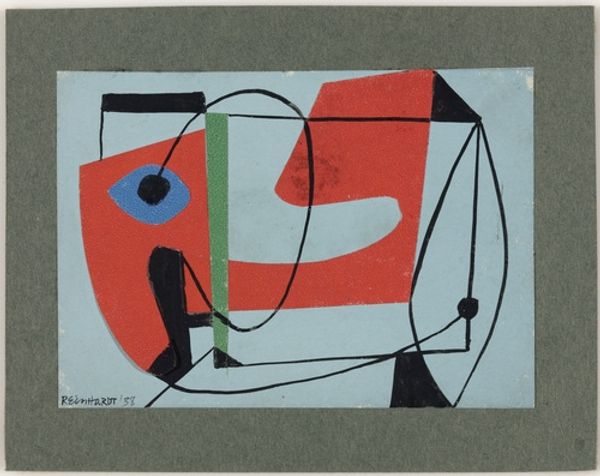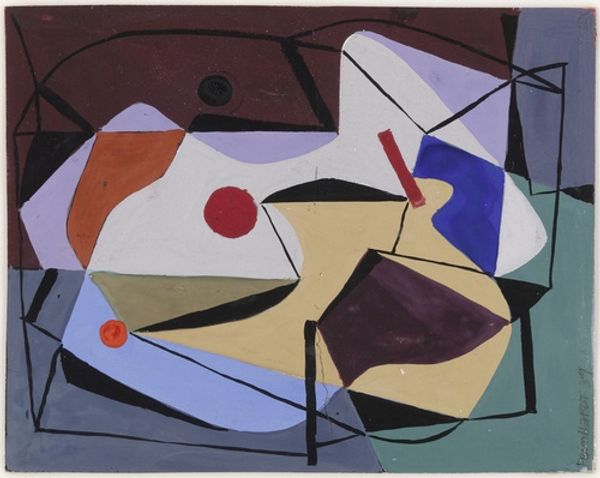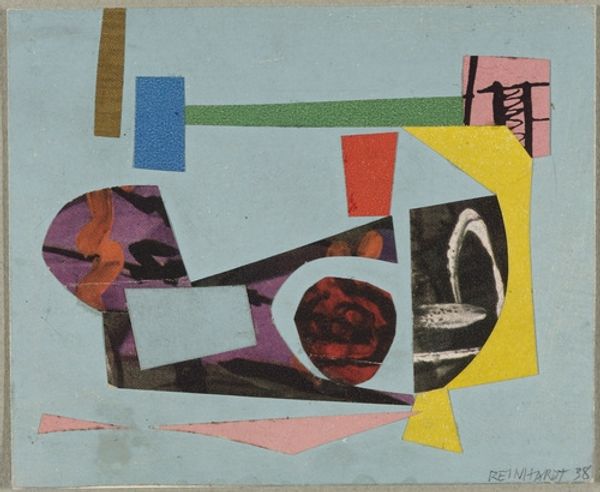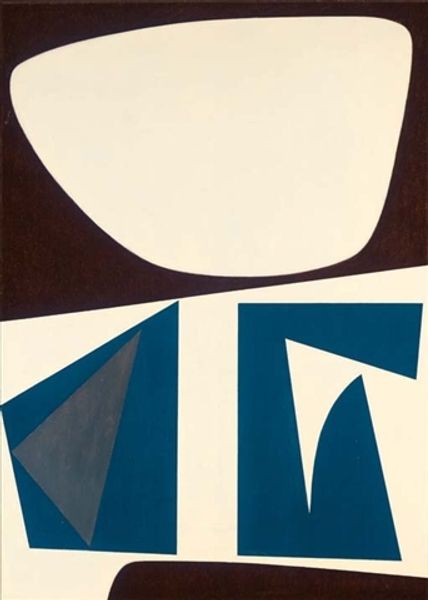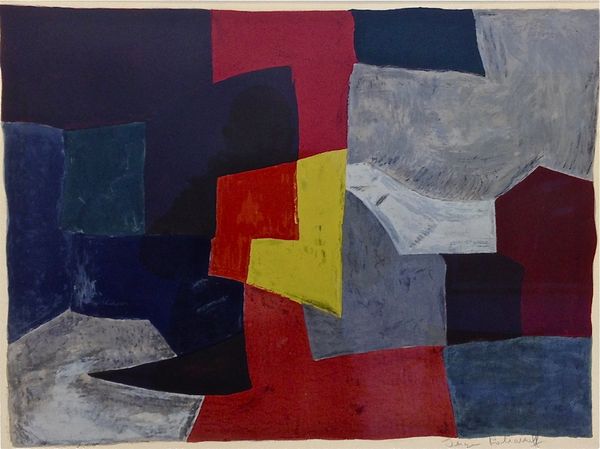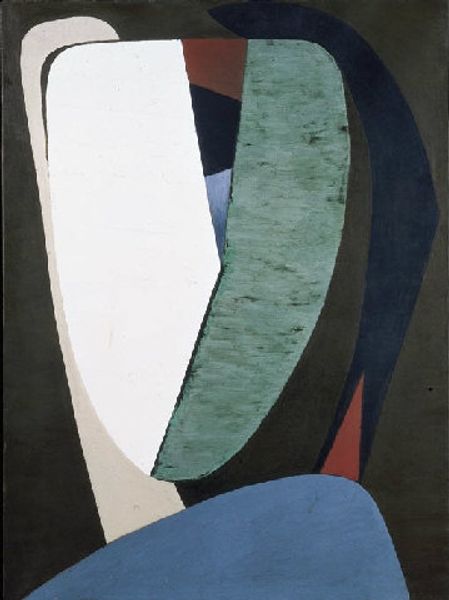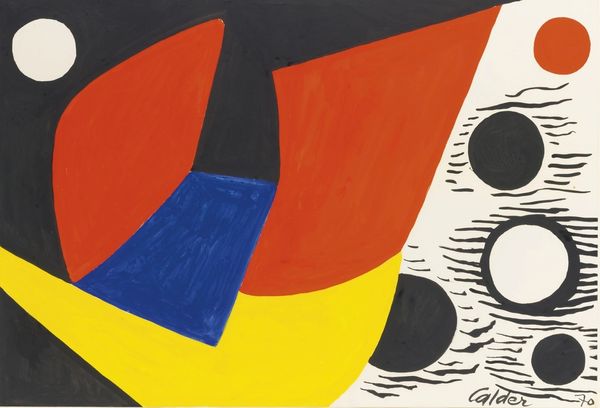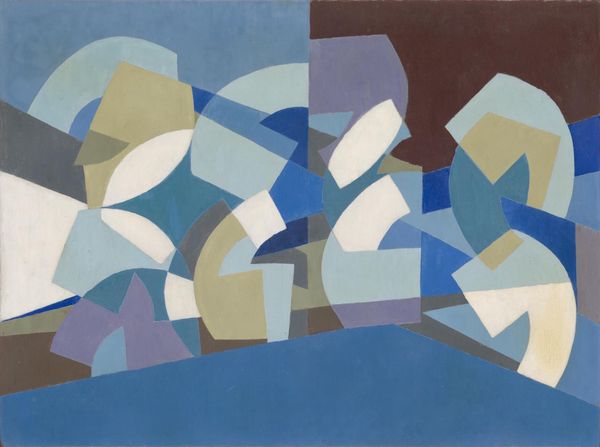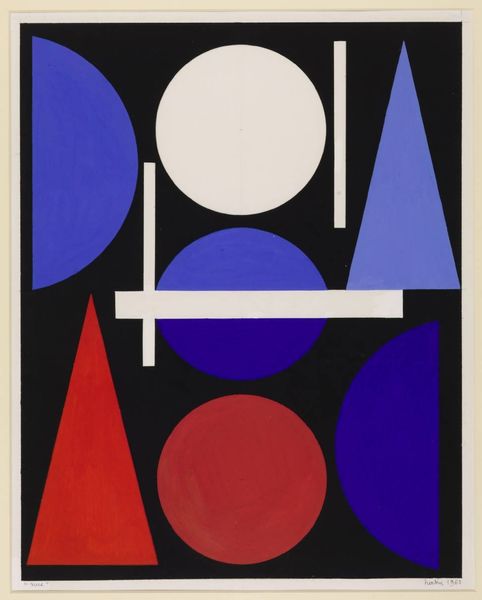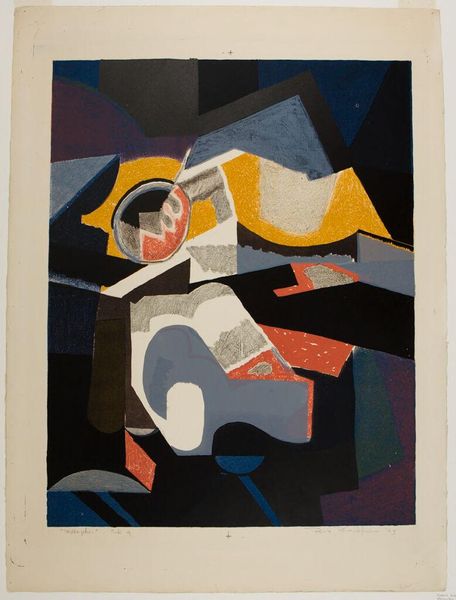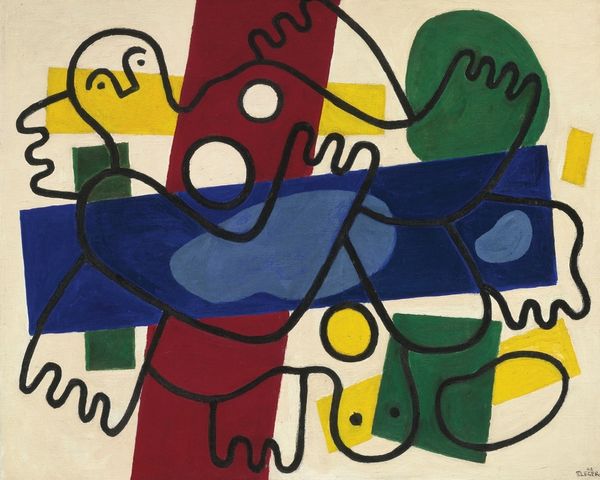
Dimensions: support: 254 x 356 mm frame: 353 x 456 x 22 mm
Copyright: © The estate of Arthur Jackson | CC-BY-NC-ND 4.0 DEED, Photo: Tate
Curator: This is Arthur Jackson’s ‘Painting,’ a work from the Tate collection, though its exact date is unknown. The composition is striking. Editor: Immediately, I’m drawn to the tension between the sharp geometric forms and the soft, almost hazy, quality of the overall image. It feels very contained. Curator: Precisely. Jackson employs a limited palette—blues, blacks, reds, yellows—within a defined oval, creating a sense of controlled dynamism. How do you interpret that form? Editor: The oval reminds me of a petri dish, suggesting perhaps a commentary on scientific observation, the detached study of forms and their interactions. Curator: An interesting point. The artist clearly manipulates positive and negative space, inviting us to consider the relationships between shapes and their absences. Editor: Absolutely. Thinking about post-war anxieties, the fragmentation could speak to broader feelings of unease and societal shifts. Curator: A convincing argument. It highlights how even abstract forms can resonate with the historical context of their creation. Editor: It's a powerful reminder of art's ability to mirror and engage with the world, however subtly.
Comments
Join the conversation
Join millions of artists and users on Artera today and experience the ultimate creative platform.
tate 7 months ago
⋮
This painting was made in the same year that Naum Gabo wrote an article called ‘The Constructive Idea in Art’ in the anthology Circle. Gabo proposed that form and content should be ‘one and the same thing’, in science, architecture and design as well as in art. He offered the fluidity and poise that Jackson achieved in this small painting as an example of the Constructive idea. Using a combination of precise measurements and intuition, Jackson over-layers the forms to give the painting a three-dimensional quality. Gallery label, February 2010
